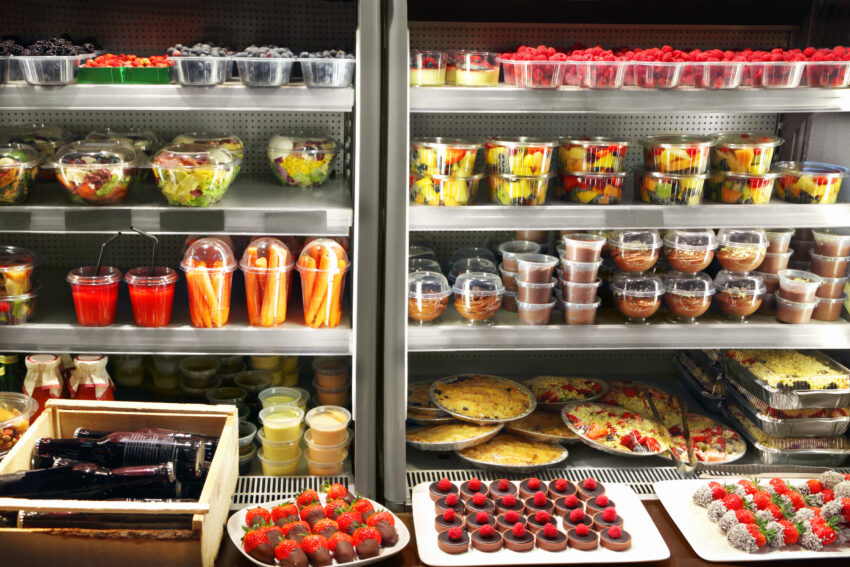OPTIBARRIER
Over- VS under packaging: what is the optimal barrier for the packaging of your food products?

Pack4Food, LFMFP (UGent), nutriFOODchem (UGent), CPMT (UGent), LLT (KU Leuven), BVI, Verpakkingscentrum (UHasselt)
"OptiBarrier" is a VIS-trajectory started at the1st of October 2015 until the 30th of September 2019. A VIS-trajectory is a IWT Subsidized Flemish Innovation Partnership which aims to deal with specific challenges of a group of companies through innovation . A VIS-trajectory focuses primarily on Flemish companies, but is also open to collaboration with companies outside Flanders. OptiBarrier consists of three specific research work packages on the central issue: over- vs. underpackaging, supported by two extensive work packages dealing with dissemination and implementation of the results within the participating companies.
Research project in close collaboration with companies
In the first part of the OptiBarrier project, a review of the role of packaging as gas barrier is done. Often, foodstuffs are packed under modified atmosphere (MAP), but with a barrier which is often way larger than the necessary for the desired shelf life. On the other hand, there are foods that when provided with a higher oxygen barrier would have a longer shelf life. This work package looks at the gas barrier of mono- vs. multi-layer materials, and it also evaluates the impact of the thickness of barrier layers. The effect of storage temperature is also evaluated. Unlike previously done, in OPTIBARRIER project foods instead of simulants are used (e.g. cooked ham, cheese, ready-to-eat meals, ...). This has the advantage of providing results which are immediately implementable by the participating companies.
The second part of the OptiBarrier project reviews the role of packaging as light barrier. Many food products are sensitive to light, especially when there is still residual oxygen present. Obviously, there is a great interaction with the previous work package on gas barrier. In this work package, the effect of the type of light (UV - visible), the intensity of the light and the type of packaging material on the quality of different foodstuffs is studied. Foods with different light-sensitive components are investigated (pâté, cooked ham, mashed potatoes, gravy, ...). This work package focuses especially on the evaluation of the interaction between the dynamic O2 concentration and the type / intensity of the light which will lead to concrete implementable knowledge for the participating companies facilitating their choice of the optimal packaging concept for foods where discoloration and oxidation is an issue.
The third part of the OptiBarrier project reviews the role of a functional barrier against migration of, among others, mineral oils and ink components from packaging into food. In this work package the main migrant components is identified and the efficiency of different barrier layers and coatings against these migrants is evaluated. Various functional barrier strategies are developed and evaluated. The aim of this work package is to provide companies with implementable information regarding specific effective functional barriers against specific migrants.
Practical implementation by the companies
Each part of the project (gas, light, functional) consisted of several sub-tasks and for each of these sub-tasks tests were performed by the different research partners, including storage tests for different food products (short shelf life, medium shelf life and long shelf life products) each packed in a reference, a low barrier packaging and a high barrier packaging . A number of important conclusions or lessons learned have emerged from this, such as:
- for short shelf-life products it was possible to switch to monolayer materials or to simplified materials (with fewer layers).
- for medium shelf-life products, the interaction between oxygen and light turned out to be very crucial; in many cases a multi-layer material was still necessary here, but it was possible to switch to a type of multi-layer composition that is considered to be more recyclable.
- the effect of adding an oxygen absorber to the packaging was that a better color and odor stability was observed when the meat product was packed in a high barrier packaging. In low-barrier packaging, the addition of an oxygen absorber proved unhelpful;
- the presence of an outer PE layer on moisture-sensitive high-barrier packaging is important to sufficiently preserve the oxygen barrier. Also, the position of the different layers in a multi-layer package can be of crucial importance for the gas barrier properties;
- the influence of the type of food on migration of components from the packaging into the food.
Have a look at our network